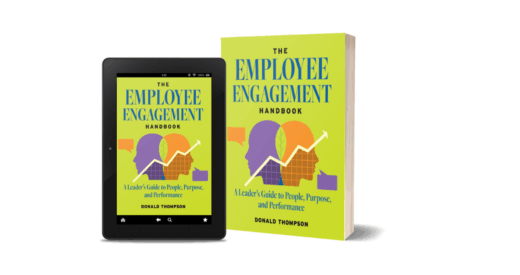Click here to download “Navigating the 2020 Election Outcome with Your Employees”
It’s Wednesday, November 4. The election is finally over and we have a new president….or the same president. Maybe it’s still too close to call or one of the candidates refuses to accept the outcome. Wherever we find ourselves when we turn on the television as we pour our morning cup of coffee, one thing is for sure — today will not be business as usual.
Following the 2016 election, one study estimated that the effect on job performance resulted in approximately $700 million in lost productivity on the day following the election. In 2020, with a brighter spotlight on racial injustice, a fractured economy, and a pandemic that has claimed the lives of over 225,000 Americans, employers should be mindful of the effects that this election may have on their employees.
It is important to understand that many individuals will be deeply concerned with the outcome, and if that outcome does not go as they hope or predict, they may not be performing at their best in the days that follow. Your team may be frustrated, disheartened, distracted, and generally disengaged with their work during this time. To that end, you may need a post-election preparedness plan for your teams to ensure that you can provide the support and guidance required, minimize disruptions, and get back to business faster.
In preparation for the potential of an emotionally tumultuous week, there are a few steps that you can take to ensure that you are giving your employees the resources and space they need to process their emotions.
- Minimize any non-critical events or meetings being scheduled on November 4-6 to give employees space to work independently and at an adjusted pace.
- Remind employees of your organization’s EAP program, if available, should they need additional support.
- Adjust deadlines and deliverables in anticipation that more employees will call in sick from Wednesday to Friday.
- Work with your DEI leaders and employee resource groups to provide one-on-one support or virtual team support sessions for employees.
Middle managers may find themselves in a tough spot, asking the question, “How do I express empathy for the emotions of my team while sharing a client complaint and processing my own feelings on the outcome of this election?” Schedule time to give yourself some space to breathe, sit still, and be frustrated before finishing your workday. Go on, put it on your calendar. Many of us are still working in virtual environments, so “making the rounds” takes a bit more effort. Check in with employees by scrolling through all the faces in your Zoom meetings. Are some looking distraught? Send a note or give a quick call to inquire on what they may need that day to be productive. Don’t bring up the election specifically, although some may want to share their thoughts with you. Simply listen, share resources to help the employee cope with how they are feeling and then get back to business.
Here are additional tips to lead your team through the next week:
- Address the elephant in the room. Do it quickly, acknowledging the difficulty for many around the outcome and reinforcing expectations and client or customer commitments.
- Recommend self-imposed restrictions on media consumption. News outlets and social media channels that are discussing “what went wrong” on a 24-hour cycle are not helpful to anyone’s state of mind.
- Interrupt conversations that may be problematic and put the focus back on business. This can be done by saying, “All right, let’s move on. ” or informing employees they’ll have to agree to disagree and move on by changing the conversation.
- Encourage employees who feel uncomfortable to speak up. Clearly describe avenues for complaints to ensure that employees feel comfortable reporting any issues.
- Remind everyone of the consequences of disrespectful behavior and follow through with consistent counseling and discipline.
How to Respond to Common Statements and Questions
“I have free speech rights!”
Many employees believe they have “free speech rights” to speak their minds – including at work. They are wrong. The First Amendment protects citizens against government action limiting speech. For private employees, very little speech is protected. A “private employer” does not mean a privately held company – it means all non-government employers including public, private, and not-for-profit. Employees of non-government employers do not have a “constitutional” right to speak their minds about politics in the workplace.
“Anyone that voted for [insert candidate here] is an idiot (or a racist).”
Remind employees about your equal employment, anti-discrimination, and anti-harassment policies and the consequences of disrespectful behavior. Remind everyone that while they are entitled to their opinions, those opinions should generally not be expressed at work, whether virtual or in person, when they offend or alienate other employees.
“The winner was unfairly elected”, or “the election had interference from another country.”
This is a common concern and one that both parties seem to agree upon. You’ll want to communicate that you empathize with an employee’s frustration, share that many voters might feel this way and offer positive reinforcement. Perhaps focus on local or state candidates that can impact policy and encourage positive ways of self-expression such as writing to local government about their concerns.
“This outcome is going to start a civil war.”
Recent polls note that many worry about the legitimacy of the upcoming presidential election and fear an outcome that appears tainted could heighten the nation’s already frayed psyche and exacerbate violence in the streets. Reinforce that employees should pay attention to their surroundings and take precautionary measures that make them feel safe. If there is unrest in the communities in which your employees live and work, encourage them to work from home if possible.
“This president is going to destroy our country.”
While the President of the United States is the leader of the free world, he (for 2020 this pronoun is correct, but should not be assumed for future elections) is not able to function entirely independent of the other branches of government. Reiterate that we hope as a nation, we have elected individuals that will do a better job over the next four years of working across the aisle for the good of our country.
“[Insert candidate here] is a crook and should be in jail.”
Share with employees that if a crime was committed, there will be due process and remind them that we can’t possibly have all the information by listening to news pundits or unproven internet theories.
Advice for Civil Conversations
Politics is often an emotional topic because government policies impact our deeply held beliefs and values. However, banning political discussion in the workplace is nearly impossible, especially in a virtual environment. Party lines are more distinct and tempers can flare into heated debates that create tension among co-workers. In some cases, disagreements can escalate into insults or shunning colleagues who hold opposing views. Therefore, provide employees a framework to have positive discussions. Joseph Grenny, co-author of the book Crucial Conversations: Tools for Talking When Stakes Are High, offered the following tips on how to share political opinions at work without dissolving into hard feelings and loss of respect.
- Frame your conversation as a chance to learn from each other, not to change each other’s minds. Simply being curious about another’s position is sufficient motivation to engage. That may sound like: “I know what I think about this issue, but I’m curious about why you feel so differently. Would you be open to sharing your position with me?”
- Explain that you aren’t trying to change the person’s mind or attack their position. Then ask for permission to talk about the sensitive topic. Here are some examples: “I’m not wanting a debate, and I’m not trying to change your mind. I just want to understand. I see this issue very differently. Would it be OK if I explained my perspective?”
- Show respect. Others will not engage with you if they don’t feel respected by you. Over-communicate your respect for the other person and their opinion: “I value you and your perspective. I want to hear from you. I don’t assume I’m right.” “What have you experienced or learned that led you to feel that way?”
- Look for areas of agreement rather than disagreement. If the conversation takes a more dramatic turn, look for the greater principle governing both opinions. Say things like: “I want to find the goals we share and then look at the issue with those goals in mind.” “Sounds like, for you, this ties to lots of things that are also very important to me.”
- Most importantly, don’t forget the “pause button.” It’s important when you’re having emotion-forward conversations to take a moment to breathe before responding back to the person you’re speaking with. In conversations where there can be differing views, taking a breath will help you be more mindful when you speak.
Whichever of the many post-election scenarios plays out, it will be helpful to relate your efforts around respect, empathy, and understanding to the diversity, equity, and inclusion efforts that are likely already underway in your organization. Remember that in times of stress, employees carefully watch the words and actions of leaders. Reiterate your core values and demonstrate leadership through empathy.






